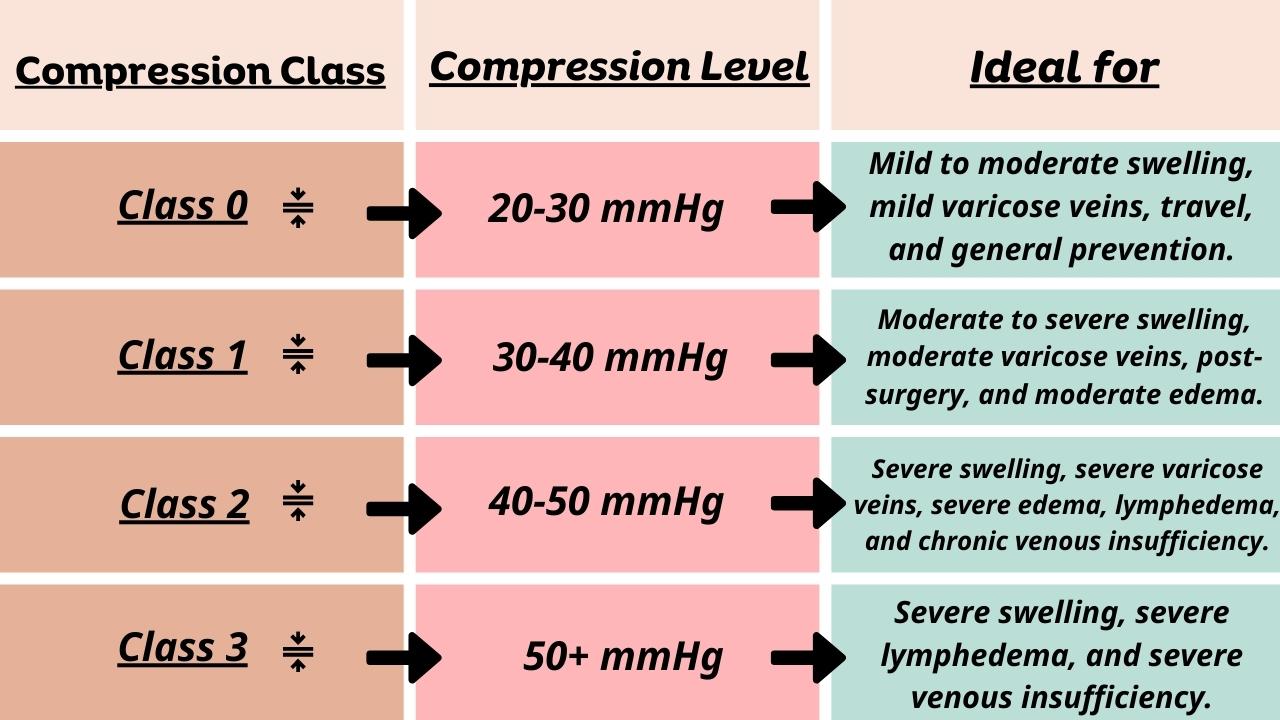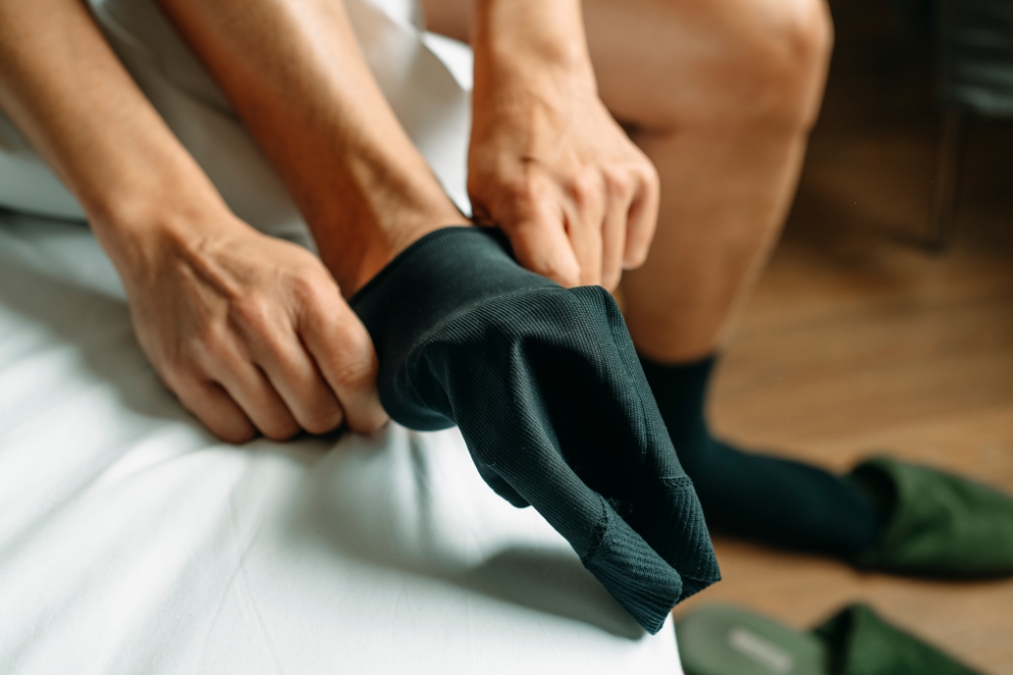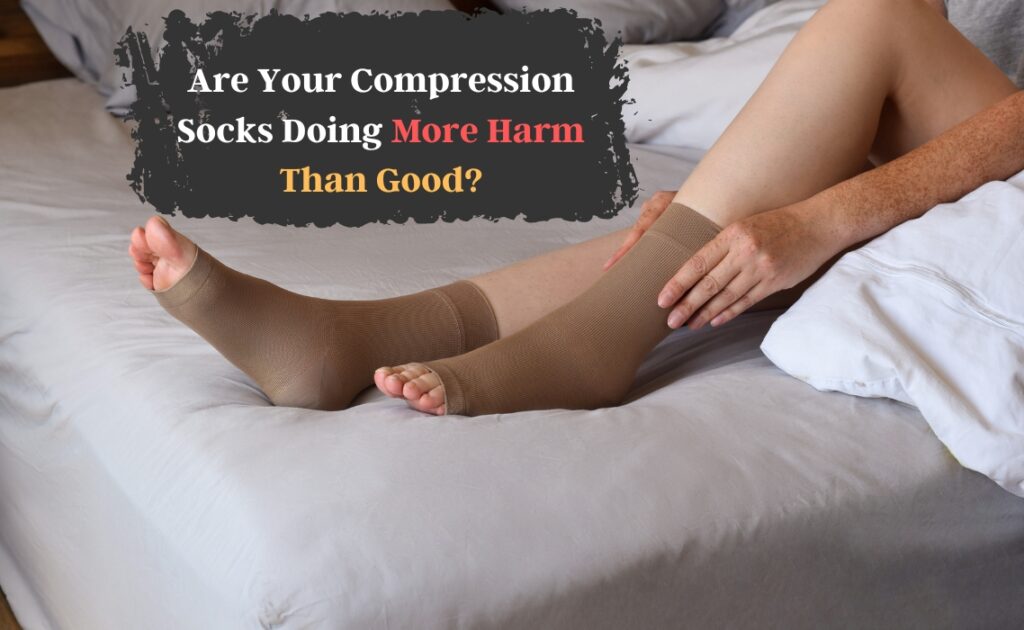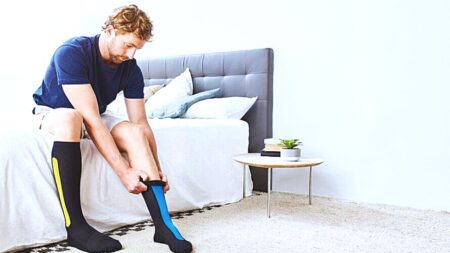Can Wearing Compression Socks be Harmful? What You Need to Know Before Wearing Them.
Compression Socks have become increasingly popular in recent years as people look for ways to improve blood flow, reduce swelling, provide graduated pressure to the legs and feet and enhance recovery. Whether you are an elite athlete or just someone who spends long hours sitting or standing and wants to feel more comfortable, compression socks can offer a range of benefits
However, with the increasing use of compression socks, some concerns have been raised about their safety. For those of you who are wondering if wearing compression socks can be harmful, We will provide you a comprehensive guide to answer your question, while providing you with the information you need to make an informed decision, So please keep reading our article.
What Are Compression Socks?
Before We dive into the specifics of compression socks (their benefits, are there any drawbacks of wearing them, how to wear them safely..) Let’s take a moment to define what we mean by compression socks.
Well! compression socks are a type of hosiery designed to provide graduated pressure to the legs and feet, improve blood flow reduce swelling and prevent blood clots from forming
they are typically made of elastic materials that are tightest at the ankle and gradually loosen up as they go up the leg.
Compression Socks are available in three levels of compression: Mild, Moderate, and Firm so it’s important to choose a level that’s appropriate for your needs
- Mild Compression Socks provide the least amount of pressure and are designed for everyday wear to prevent minor swelling and discomfort
- Moderate Compression Socks provide stronger pressure and are designed for everyday wear to prevent moderate swelling, fatigue and discomfort due to prolonged sitting or standing
- Firm Compression Socks provide the highest amount of pressure and are designed for individuals with more severe conditions such as varicose veins, lymphedema and deep vein thrombosis
If you are uncertain about what level of compression is right for you, it is recommended to consult a doctor or a specialist in sports medicine.

Can Wearing Compression Socks Be Harmful?
Compression Socks are specially designed to provide support and improve circulation to the legs and feet. However, like any other type of hosiery or equipment, there are certain risks associated with wearing compression socks, and here are some of those potential risks:
-
Skin irritation:
Some individuals may experience skin irritation or chafing from the tight material. This can manifest as redness, itching or rash on the legs if you experience any of these symtoms, it’s important to stop wearing the compression socks and consult with a medical professional
-
Blood Clots:
While Compression Socks are often recommended for improving circulation, there is some evidence that they may increase the risk of blood clots
For example, if the compression is too tight or if the socks are worn for too long they can restrict blood flow and increase the risk of blood clots
-
Nerve Damage:
If the compression is too tight or if the socks are worn all day long without a break, this may lead to nerve damage which can result in numbness, tingling or even paralysis in the legs, so it’s important to choose the right sizes and fit for your socks and to take breaks from wearing them if you start to experience any discomfort
-
Decreased Circulations:
Compression Socks are generally considered safe and play an important role in improving circulation when worn correctly. However, if the compression socks are too tight or if they are worn for a long period of time without a break, they may actually decrease circulation and cause the veins in the legs become compressed which in turn can lead to swelling, pain and other complications.
-
Overuse Injuries:
Wearing Compression Socks that are too tight and for extended periods of time during physical activities can increase the risk of overuse injuries like: shin splints, Achilles tendonitis and plantar fasciitis
-
Swelling:
While Compression Socks are meant to reduce swelling in the feet and ankles, unproper usage can cause potential skin issues
- This can happen if socks are too tight and worn all day long without taking a break
-
Allergic Reactions:
Individuals with sensitive skin may suffer from allergic reactions to specific materials used in compression socks leading to skin irritation and other symtoms.
-
Numbness and Tingling:
It’s essential to note that you should never wear compression socks for more extended periods than recommended. Prolonged use of compression socks that are too tight can cause numbness, tingling and even nerve damage.
While these risks may occur, they are relatively rare and can often be avoided with proper use and fitting
It’s always good to consult with your healthcare provider to avoid any negative symtoms while wearing your compression socks
How to Wear Compression Socks Safely

Like any medical product, compression socks may not be suitable for everyone and unproper use and fitting can result in some potential risks like skin irritation, blood clots, nerve damage, fatigue, …etc
Although these risks are rare, it’s important to avoid them. and in order to reduce the risk of these potential complications, it’s essential to wear compression socks in a proper way.
So here are some tips on how to wear your compression socks safely.
1- Get a Proper Fit
Make sure your compression socks fit properly because ill-fitting compression socks can lead to discomfort and fatigue as well as some other potential risks like swelling blood clots, .., So,
Make sure to measure your legs and feet carefully to ensure a proper fit. Don’t forget to consult with a healthcare professional for guidance if you have a medical condition that requires compression therapy
2- Start Slow
Compression socks are available in three levels of pressure: Mild, Moderate and Firm. If you are new to wearing compression socks, start with mild, then after a period of time, you can go for moderate and gradually work your way up to higher levels. it’s important to give your feet time to adjust to the compression
3- Follow The Instructions
Each brand of compression socks has specific instructions on how to wear and take care of the socks it’s important, then, to follow these instructions step by step to ensure the best usage and longevity of your compression socks.
4- Take Breaks
Wearing compression socks that are too tight and for too long without a break, can restrict blood flow and increase the risk of blood clots so it’s important to take breaks from wearing them: You can remove your socks for at least 30 minutes every few hours to allow your legs and feet to breathe and recover
5- Keep Your Skin Dry
Moisture can increase the risk of skin irritation and infection, especially when wearing compression socks for too long. It’s advisable to keep your feet dry by applying talcum powder or using moisture-wicking socks
6- Stay Active
Compression Socks are designed to provide graduated pressure to the legs and feet, improving blood flow and reducing fatigue during intense physical activities but they should not be used as a substitute for physical activity.
Stay active and incorporate regular exercise into your daily routines to maintain healthy blood circulation
7- Talk to Your Healthcare Provider
Individuals with medical conditions such as varicose veins or swelling should talk to their healthcare provider before using compression socks; because they can help them determine the appropriate level of compression
8- Wear Them As Directed
To reduce the risk of potential complications, it’s essential to wear compression socks as directed or advised by your healthcare provider or the manufacturer, that is to say, you should wear them for a few hours at a time, remove your socks for at least 30 minutes every few hours to allow your legs and feet to rest and breathe and don’t wear them overnight unless instructed otherwise
9- Don’t Wear Them During Certain Activities
Compression socks are designed for people of all ages, genders and fitness levels; They can be beneficial for medical conditions such as varicose veins, deep vein thrombosis and those who are recovering from surgery but you should keep in mind, those compression socks are not appropriate for all activities, for example, they should not be worn during intense physical activities that put a lot of stress on the legs such as high-impact sports
10- Don’t Wear Them Too Long
As we have already mentioned, it’s essential to take breaks from wearing compression socks because putting them on for too long can actually decrease circulation and lead to swelling and other health complications
When To Consult A Doctor
It’s important to consult with your healthcare provider if you experience any of the following symtoms:
- skin discoloration or blisters
- redness, itching or rash on the legs
- numbness or tingling that persists after removing the socks
- swelling or pain that does not improve with rest and elevation
Conclusion:
Compression socks can be a helpful tool for reducing swelling. they work by improving blood flow and preventing blood from pooling in the legs.
However, they may not be suitable for everyone and it’s important to consult a doctor before wearing them.
Additionally, it’s important to wear them correctly and abide by the instructions given by the manufacturer to ensure comfort and prevent further restriction of blood flow.







